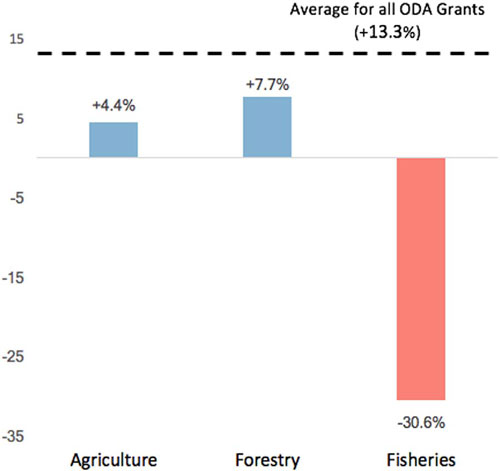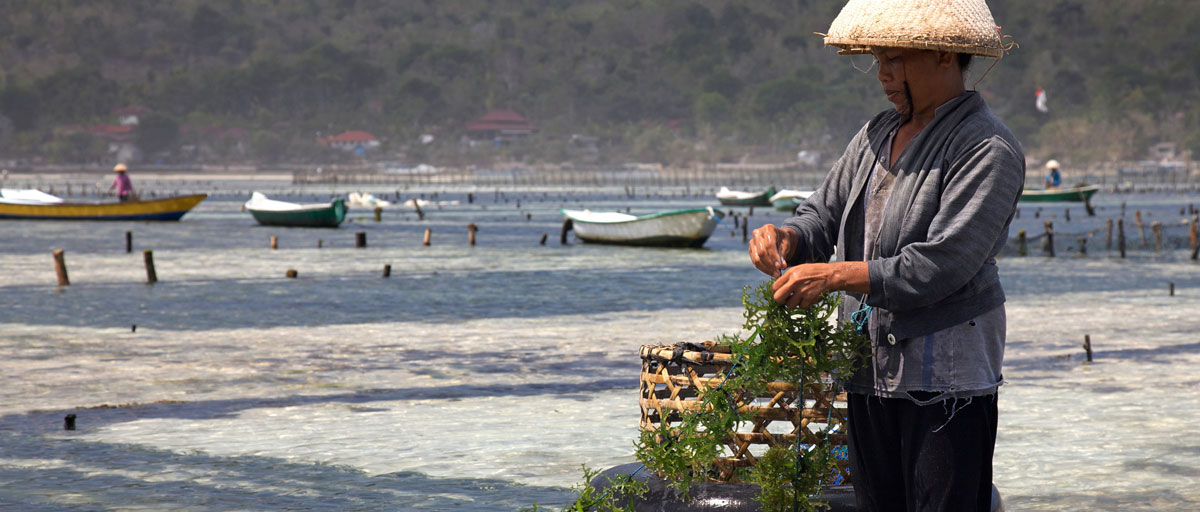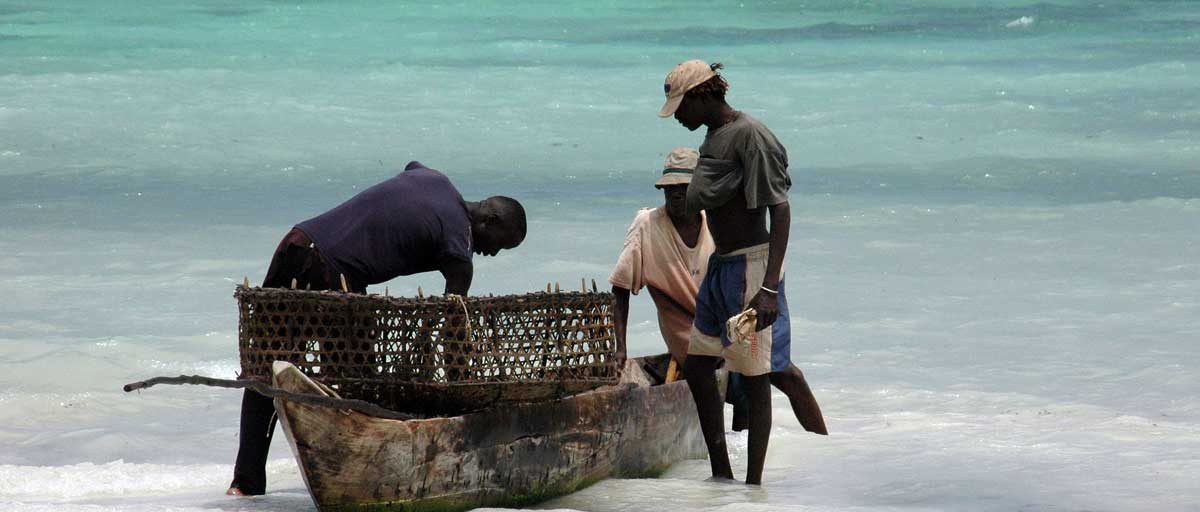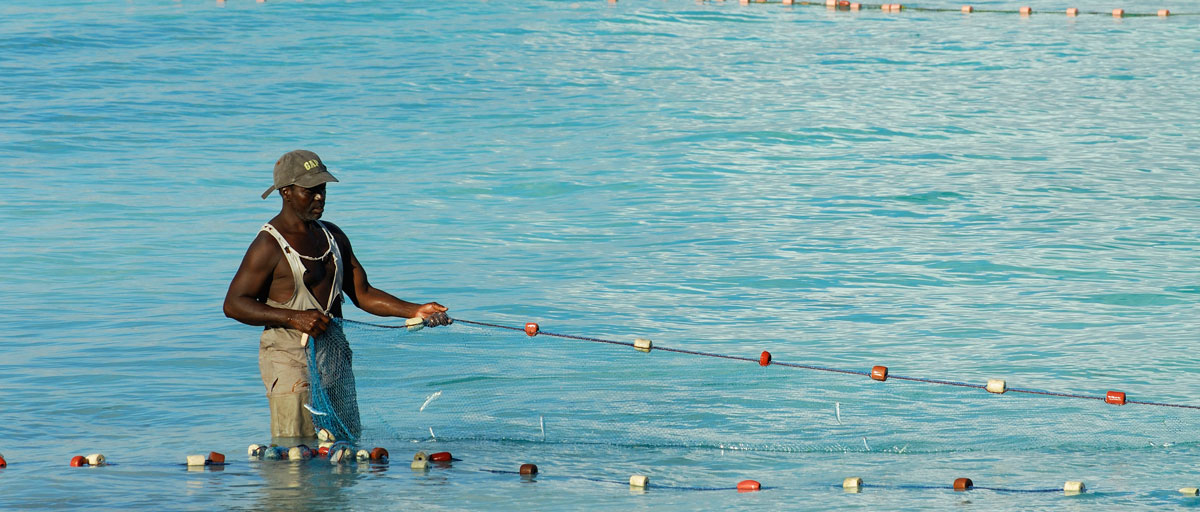Bildtext får vara max två rader text. Hela texten ska högerjusteras om den bara ska innehålla fotobyline! Photo: B. Christensen/Azote
Official Development Assistance
No longer aligned
Official aid for oceans and fisheries in developing world drops by 30%
- Official Development Assistance (ODA), commonly known as aid, is financial assistance to the developing world
- Aid to fisheries in developing countries has declined by 30 percent. Projects focusing on climate issues in fisheries had a 77 percent decline
- Small Island Developing States that rely heavily on fisheries for food security, livelihoods, customs, and culture, stand to be most impacted by this loss of aid
Sustainable fisheries make good sense for jobs, nutrition, and climate change resilience. Despite this, financial aid to fisheries in developing countries has declined by 30 percent. Furthermore, projects focusing on climate issues in fisheries had a 77 percent decline. These are the main results from a study conducted by centre researcher Robert Blasiak and his colleague Colette Wabnitz from the University of British Colombia. Both are part of the Nippon Foundation Nereus Program.
Official Development Assistance (ODA), commonly known as aid, is financial assistance to the developing world. From 2010 to 2015, ODA levels increased by over 13% to USD $133 billion, with further increases in 2016 and 2017. Yet, funding to fisheries projects in Oceania dropped by almost half, according to the study which was published in Marine Policy.
“Demonstrating tangible results in fisheries as a result of donor support is often more difficult in the oceans than it is on land,” says Blasiak.
The role of aid
ODA funds are used to help people fish more sustainably, protect the environment, and create better jobs. These funds are used in fisheries for varied projects, including undertaking research, supporting policy, providing equipment, as well as training and capacity building.
Fisheries are at the nexus of health, nutrition, livelihoods, and economic security, if aid can help to get fisheries 'right', the positive impacts will extend into lots of areas
Robert Blasiak, co-author
Practical research could for example focus on how to improve fishers’ access to less vulnerable stocks, and transfer fishing effort away from vulnerable ecosystems like coral reefs on to less threatened open ocean stocks, with strategically located fish aggregating devices (FADs).
“The types of projects are really diverse, they include testing water quality and measuring ocean acidification, improving marketplaces, training local staff, and providing solar-powered fridges to remote communities to reduce spoilage and losses,” says Colette Wabnitz. “According to our research, fisheries ODA has also increasingly been channeled towards improving policy and management rather than fishery development.”

Percentage change (2010–2015) in the overall value of ODA grants to productionsectors. Click on illustration to access publication
Who will suffer
Small Island Developing States that rely heavily on fisheries for food security, livelihoods, customs, and culture, stand to be most impacted by this loss of aid.
Coastal communities in low-income countries are especially reliant on the micronutrients provided by fish. Many of the Pacific small island states have minimal land area and cannot turn to agriculture for their nutritional requirements.
Fish supplies 50 to 90 percent of the animal protein to the diets of many communities in the Pacific. But there has been an increase in exports of fish from these countries and imports of lower quality foods, such as canned meat, instant noodles, and cereal.
Nexus of health, nutrition, livelihoods, and economic security
Blasiak and Wabnitz believe modelling, on-the-ground monitoring and capacity building can improve understanding of the future impacts of climate change on fish stocks and highlight pathways to sustainable management. This can improve future climate adaptation strategies.
“Tremendous advances in modeling have made it possible to identify countries that will be particularly vulnerable to climate change impacts. Science is enabling practical action to prioritize the most vulnerable areas, in line with stated international commitments,” says Blasiak.
"Fisheries are at the nexus of health, nutrition, livelihoods, and economic security, if aid can help to get fisheries 'right', the positive impacts will extend into lots of areas.”
Methodology
The analysis draws on accounting data provided through the OECD Creditor Reporting System from 2010 until 2015, the most recent year in the system. The year 2010 was selected as it marked the point at which a series of standardized project markers were mainstreamed, enabling further analysis based on the classification of projects according to their primary objectives (e.g., “gender equality” or “climate adaptation”). To contextualise the results and provide explanatory narrative beyond arguments outlined in the literature, which is limited, a number of ad hoc and informal unstructured interviews were conducted with key donors, asking them for their insights on the findings of this study.
Blasiak, R. and Wabnitz, C.C.C. 2017. Aligning fisheries aid with international development targets and goals. Marine Policy 88: 86-92.

Robert Blasiak is a postdoctoral researcher at the Stockholm Resilience Centre and senior research fellow with the NEREUS Program focusing on cooperation and conflict related to ocean management









